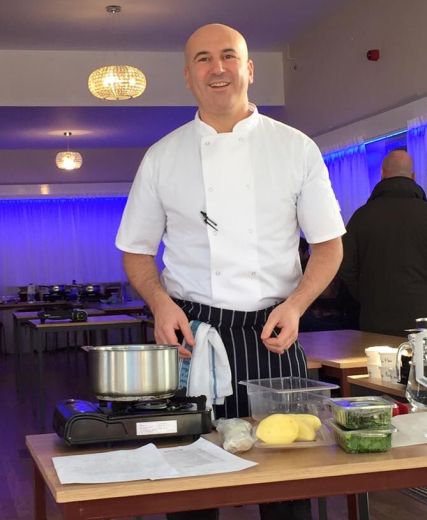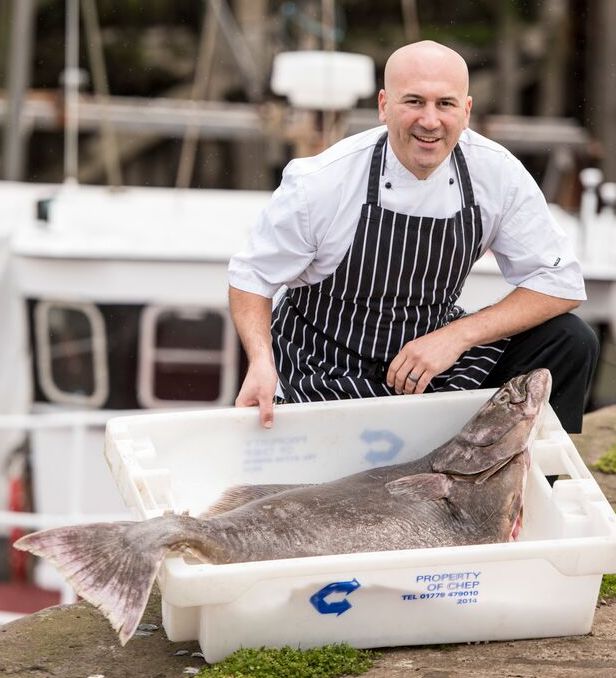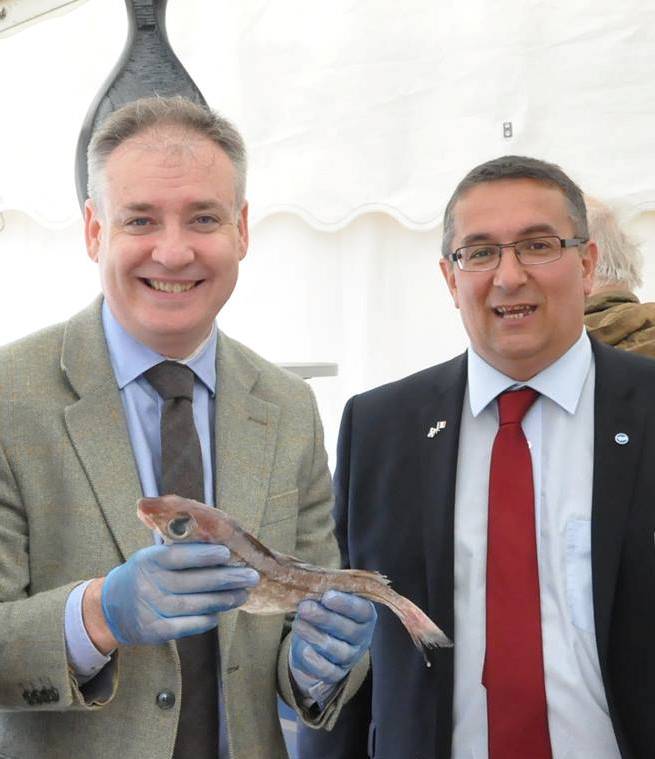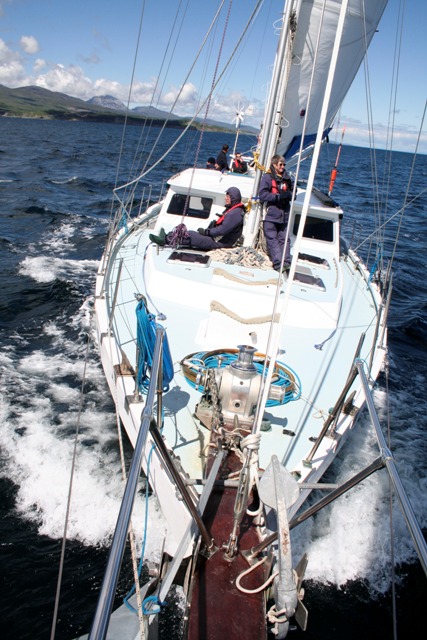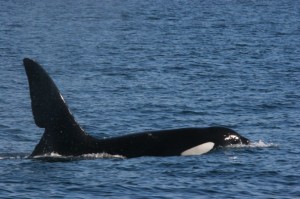By Suzanne Kelly.
 Salmon fishing and salmon farms are under increasing pressure to supply Scottish salmon to the world. This is not without a price to wildlife.
Salmon fishing and salmon farms are under increasing pressure to supply Scottish salmon to the world. This is not without a price to wildlife.
The salmon in farms are prone to disease, are painfully attacked by flesh-eating sea lice, and live their lives in insufferably small, crowded pens as compared to the space and freedom the species would normally enjoy.
Pollution from salmon farms and escapee salmon are causing environmental disruption. Salmon nets seem to be growing in scale and quantity year on year.
Salmon netting is on the increase; anglers report that very few animals are making their way to the rivers.
Against this backdrop, to protect the financial interests of the businesses engaged in salmon production, the government allows seal shooting when it knows that seal numbers are in decline, that non-lethal methods of protecting salmon in nets exist, and that seals that have been shot or found dead contain little salmon in their digestive tracts. Is this a case of finance overriding ethics and environment?
Suzanne Kelly went out with George Pullar and his crew to empty USAN’s salmon nets and get Pullar’s perspective on his operations, seal culling and fish stocks. Following publication of the resulting article, Kelly talked to Sea Shepherd, Animal Concern Advice Line, Gardenstown landowner Marc Ellington, animal activists, and hunt saboteurs.
Their tales are quite at odds with many of Usan’s claims.
Some of the arguments offered by various proponents of salmon netting – and seal shooting in North East Scotland are:
“There are plenty of fish in the sea”
“Plenty of salmon for anglers and netters alike”
“Seals attack nets and will be shot if they persist”
“Capping the number of seals that can be shot is ‘pointless’”
“The seal population has gone up 1000% in the last ten years”
“Netting is Scottish heritage”
Unfortunately all of these arguments are either misleading or simply not true.
Background:
Scotland is exporting more and more salmon; international demand is up (barring the current Russian ban on western food imports linked to the crisis in the Ukraine). The demand is being met by both salmon farms and by increased netting activities. Netting salmon is a ‘heritable right’ which can be bought or sold.
When Usan acquired rights to operate in the Ythan estuary, this marked an increase in its operations. Usan currently has 15 vast nets in the coast south of Montrose which are emptied twice a day. Leaders funnel the salmon, other fish and jellyfish into the inescapable net traps.
Local Heroes and Villains:
June 2012 – seals are being shot in the small northerly coastal towns of Crovie and Gardenstown. Marc Ellington is the landowner; he has expressly forbidden any shooting from his land. It is understood that people involved in shooting seals also did so on RSPB owned land, and from property owned by the crown estate. (from emails between myself and John Robins July 2012 re. Gardenstown seal shootings)
According to those in the area 16 seals were shot, 14 were pregnant. An area expert advised that NONE had traces of salmon in their digestive tracts. My source also advised:
“The shooting seems to have taken place by these people from Montrose who have the salmon rights, but was done on land owned by the RSPB – who are said to be livid.” (IBID)”
Then a seal was shot in front of tourists in Gardenstown, a small, peaceful coastal village. They cancelled their holiday rental and promptly left. The police seemed rather uninterested in pursuing the matter. The Laird of Gardenstown and Crovie, Marc Ellington, and others tried without success to get the police to enforce the ban on shooting in the area.
Again, Ellington owns the land, and has forbidden any shooting there. Firing a gun while on a boat is clearly dangerous (how many boats are safely stationary to allow someone to aim a gun?) and illegal. No seals should have been shot in these areas – and yet according to witnesses, seal carcasses washed ashore.
These seals had been shot.
Gardenstown and Crovie residents contacted Sea Shepherd, who arrived on the scene to stop any further seals from being shot. Despite George Pullar’s claims as to how his people behave, video footage taken at the time clearly shows Usan operatives threatening Sea Shepherd personnel. With no permission to shoot in the area – why did Usan have rifles there in the first place?
I visited the area with Marc Ellington; the locals I spoke with wanted to ensure no seals were shot; they wanted tourists to come and enjoy the area’s wildlife, rent holiday homes and patronise the local shops.
The idea of men with rifles killing seals will put tourists off and will hurt these communities’ incomes. Most people I spoke with in the area were very pleased to have Sea Shepherd present; one person has been keeping a log of when Usan personnel are operating in the area and what they’ve been doing.
The heritage argument:
Salmon netting in Scotland has been going for centuries; Pullar is right to claim it is a heritage activity. But that activity has dramatically changed over time.
Pretending that the man who stood on the shore with his nets and sold his catch to his neighbours is the same as the crew with 15 huge nets emptied twice a day, selling fish internationally is disingenuous.
Bullfighting of course is also a ‘heritage activity’ – it is also arguably a cruel, unnecessary unequal competition which has no place in a compassionate, enlightened world. Arguably bullfighting is to beef production what traditional small-scale netting is to Usan.
Salmon Numbers Game:
For 2012, the Scottish Government reported:
“The total reported rod catch (retained and released) of wild salmon for 2012 is 86,013. It is the tenth highest rod catch on record and is 95 per cent of the previous five-year average. The proportion of the rod catch accounted for by catch and release is the highest recorded. In 2012, 91% of rod caught spring salmon was released, as was 74% of the annual rod catch.”
http://news.scotland.gov.uk/News/Salmon-and-sea-trout-fishery-statistics-2012-445.aspx
The above paragraph gives no indication of how long the records cover making this the tenth highest rod catch, making the statement somewhat weak.
The government does however say that 91% of the rod caught spring salmon was released. However, not many fish are making it to the rivers these days. Increased netting just happens to coincide with the dramatic drop. If Marine Scotland and the Scottish government are concerned and are investigating, they are keeping quiet about it.
In 2013 the picture was already changing. As per records and the Salmon and Trout Association:
“The number of salmon killed in nets in 2013 was 50% higher than in 2012 according to the official Scottish Government figures (published in April 2014). The 2013 summer drought caused very low flows in most rivers and thus salmon were simply unable to access their rivers of origin, forcing them to run the gauntlet of coastal nets for weeks on end. There are no quotas set for wild salmon and consequently there is no mechanism to limit catches – whatever the strength or weakness of local populations.
“The 2013 net catch of 24,311 salmon compares with 16,230 in 2012 and 19,818 in 2011. In contrast the rod catch dropped to 66,387 in 2013 (the lowest figure since 2003) from 86,013 in 2012. 80% of the 2013 rod catch were released by anglers back into the water.”
Andrew Graham-Stewart, Director of the Salmon and Trout Association (Scotland) (S&TA(S)), commented:
“The figures for 2013 expose the absurdity of recent statements by Scottish Ministers that salmon netting in Scotland is declining.
“In the last three years dormant netting stations have re-opened and netting effort has increased substantially. The quantum leap in the netting catch in 2013 shows once again that salmon conservation is simply absent from Scottish Government’s agenda. On the contrary it is permitting much greater levels of indiscriminate killing by nets of an iconic species that is already under considerable pressure.”
When I was with Pullar, at least 50 salmon, ranging greatly in sizes were taken and packed into over 4 large plastic crates. He was quite clear that seals which ‘persistently’ go after ‘his’ fish will be shot. He tells me there are plenty of fish.
But the world’s demand for Wild Scottish Salmon is eating into the finite supply more voraciously than any indigenous wildlife ever could.
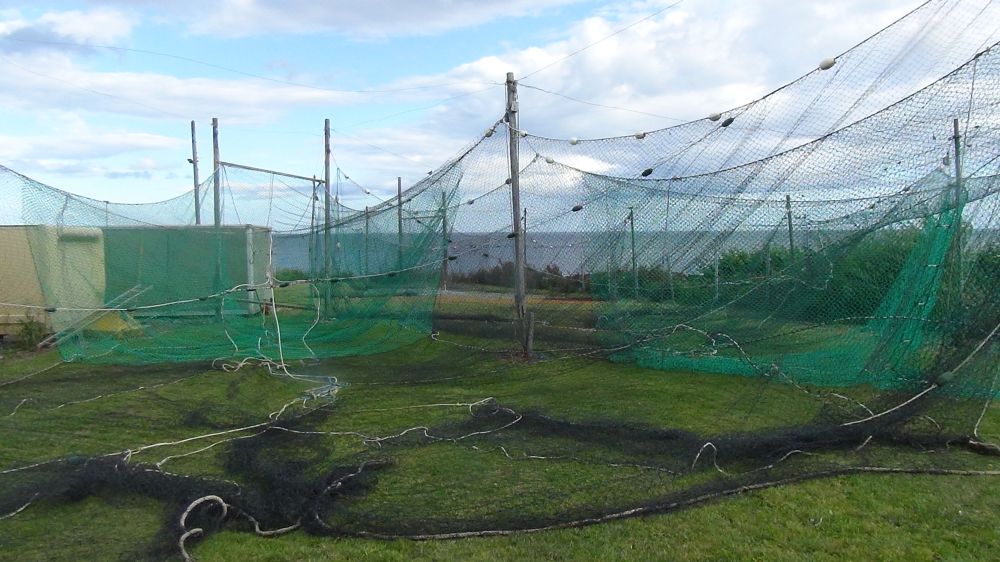
one of the type of nets used by USAN; there are bars to discourage seals from entering, but it is a vast net nonetheless
Plenty of fish? Further afield, the anglers tell a different story. Angling has a long history too; and is an essential contributor to rural Scottish economies in the Speyside area for instance.
Anglers catch fish, and return them to the rivers. However, the numbers of salmon anglers see have dramatically, measurably crashed for the anglers, if not for the Pullars.
One keen angler has spoken of his concern for the fish and the rural economy. He advises that several anglers he knows have spent up to 3 weeks seeking salmon in the rivers and coming up completely empty-handed. He expressed concern for the local businesses which are dependent on anglers spending time on the rivers and being successful in their pursuit of their hobby.
Not just a Scottish Issue:
The Salmon and Trout Association are very worried about stocks; they have called the current runs of salmon ‘the worst in living memory’. In a recent article on their website, they wrote:
“The Centre for Environment, Fisheries & Aquaculture Science (Cefas) Annual Assessment of Salmon Stocks and Fisheries in England and Wales in 2013 estimates that only 19 of the principal 64 salmon rivers in England and Wales reached their conservation targets; compared to 42 in 2011. This is the equal lowest number since conservation targets were introduced in 1993. Overall, the number of salmon estimated to be returning to England and Wales in the last two years was amongst the lowest on record.
The report does not expect a significant improvement in stock levels. Since the 1970s there has been a 40% decline in the number of salmon returning to our rivers each year, despite the much-publicised return of salmon to previously polluted rivers such as the Tyne and Mersey.”
Further details of their recommendations can be found here.
No Limits:
There is absolutely no limit to the number of salmon the netters can take, despite evidence that stocks are going down, and the pleas of those involved in conservation and angling.
My contact advises that the big fish Pullar has taken are an important part of the migration salmon make from sea to river; ‘they know what to do and where to go’. It seems possible that the increased fishing now permitted is going to disrupt important migrations, and I wonder whether the entire population could crash. Because it’s not only Pullar that is killing sea life.
Pollution is doing more to our oceans than Marine Scotland seems to be interested in. More marine life than ever which is found dead have ingested plastic waste.
You don’t have to be a scientist to know that the 50 fish Pullar took when with me are never going to return to the rivers; they are not going to spawn. Pullar says sometimes he hardly gets any salmon. Some people (who would catch a fish and return it to the water) are getting none after weeks of effort.
Seal’s Fate Sealed:
Seals are being shot as part and parcel of this relatively new fish farming and industrial scale netting sector. Seals are shot apparently to protect the interests of those involved in netting wild salmon, and those who operate salmon farms. The Scottish government via Marine Scotland hands out licenses for those involved in the salmon industry (farms and netting) to destroy common and grey seals (common seals are increasingly uncommon – more on that shortly). According to an article in the Guardian by Rob Edwards from April of last year, 892 seals were reported to the government as having been shot ; half by those involved in fish farming and the other half by netsmen such as Usan.
No one is certain how many seals are actually being shot. Marine Scotland may dole out quotas for seal hunting to the industry’s players, but it seems no official verification or record keeping is done. Animal welfare groups point out that seal carcasses have been found deliberately hidden after shooting in locations such as Elephant Rock (which I passed with the Pullars).
However, experts have found that many seals that were killed (of the carcasses found) had absolutely no salmon in their systems.
An upsetting anecdote related to me of a marksman going up to a seal on a crowded public beach and shooting it in front of children has not helped the reputation of the salmon industry, nor has a video of the would-be seal shooters caught in the act of trying to intimidate Sea Shepherd operatives in Gardenstown.
Overall, our seal population is shrinking, and Scotland is home to a fair portion of some of the world’s species of seals. These animals are persecuted throughout the Scottish Highlands and Islands; a man from Shetland was fined for clubbing 21 baby seals to death in 2009. The issues are summarised by Marine Concern in an open letter to Alex Salmond.
The persecution of seals has the government’s seal of approval. The website showing the details of the 2013 ‘returns’ states as facts ‘seals are only shot as a last resort’. It is interesting to consider how the government can state this as fact of the 52 licences it granted in 2013 to kill:
“The maximum number of seals involved is 774 grey and 265 common. Table 2 below provides details. This maximum represents less than 0.7% of the grey seal population of 100,000 and slightly over 1% of the minimum common seal population of 20,500.” (IBID)
The reasons for killing seals include “Protection of Health and Welfare” and “Prevention of Serious Damage”.
The government seems to take no account of the other pressures on seal populations from pollutants, plastics, and hunters. On the one hand killing seals is only ‘a last resort’ according to the government, and yet ‘prevention of serious damage’ is a justification for killing. What precisely is in danger of being damaged? Nets? Fish?
he also advises that while he will shoot ‘persistent’ seals
The government is not clear on its website what it means by ‘last resort’.
Would moving the nets, or avoiding seal area to avoid this mysterious damage not be a first means of avoiding destroying a seal?
Despite mounting evidence that seal populations are crashing seals are shot under license – but there does not seem to be requirements about detailed reporting of such culls .
Reporting is up to those involved in the shooting, and details don’t seem to be being collected. By contrast, an Aberdeen city deer cull required those who shot the deer to make and submit written notes of location, time and date of shooting, approximate age and weight of animal destroyed, its sex and condition, etc.
George Pullar was adamant that the salmon in his nets are his; he also advises that while he will shoot ‘persistent’ seals, he is working with experts at ways to keep the salmon from the nets. Methods include sonic deterrents and barrier bars on the cages. Pullar was issued licences to kill over 100 seals; he then told the press he would bow to public pressure and not kill. Except when necessary.
The seals didn’t get the memo that they can’t eat other wildlife – but again experts report that the seals found shot do not have much if any salmon in their guts. Seals’ nature tends to be to pursue less difficult prey.
I can’t help but think a business with several different related companies which made a five figure sum last year, might want to improve its public persona by ceasing any and all seal culling, donating money to wildlife charities, advertising its salmon as being non-lethal to seals, increase its prices to cover such expenses and voluntarily lower the number of salmon it takes I wish they would is my conclusion.
Money on all sides:
The Pullars have a heritable right to earn their living from fishing. However, wildlife tourists are already being put off visting areas. As to angling; many rural communities depend on it.
Ian Gordon, leading salmon consultant and gillie, said:
“It is fundamentally inequitable that Scotland’s coastal netting stations, which employ no more than 50, mainly part-time, individuals, are permitted to kill as many salmon as they are able to, before the fish reach our rivers. Wild salmon are a dwindling resource and the over-riding priority must now be to protect the 2,000 plus jobs of gillies and others on our rivers that depend upon a thriving angling industry to be viable.
“Angling, with the great majority of salmon caught released safely back into the river, is essentially sustainable but, if our rivers do not hold sufficient salmon stocks, anglers will simply vote with their feet – thus jeopardising in-river employment and the economies of local communities. In these circumstances Scotland can simply no longer afford to allow unrestricted coastal netting”
http://www.salmon-trout.org/news_item.asp?news_id=321
Wildlife tourism is big business here. According to a 2010 Government paper:
“The report found that wildlife tourism annually brings in a net economic impact of £65 million to Scotland’s economy and creates the equivalent of 2,760 full time jobs.
The report also found that 1.12 million trips were made every year to or within Scotland with the main aim of viewing wildlife.” http://www.scotland.gov.uk/News/Releases/2010/06/16110712
Summing up:
There seems to be clear evidence that too many wild salmon simply are not making it back to the rivers to spawn. Numbers are down; anglers are seeing the worst results they can remember. At the same time, additional netting rights by the Ythan were acquired by Usan subsidiary (aka the Scottish Wild Salmon Company) in March.
Some 500 seals are in that estuary; it is a well-known, popular tourist destination. It is hard to not see a link between these two facts.
What is hard to see is how we have skirted around the issue of Marine Protection areas for over 10 years (I was involved in some meetings meant to establish marine conservation areas years ago – and virtually nothing was accomplished; seals and birds were left out of the protection equation).
What is harder to understand is what Scottish Natural Heritage is actually for, since it doesn’t seem interesting in protecting Scotland’s natural heritage.
You could be forgiven for thinking…..
….. that seals and salmon are only pests and pound signs respectively to those charged with protecting our natural heritage for the future.
The seals are scapegoats for dwindling salmon numbers and are being shot for it. The desire to supply a finite resource to the entire world would certainly seem to be the reason for salmon decline, but we are hardly going to see an SNH censure or curtail in any way the netters; not when there is money to be made and political influence at work.
You won’t find such an admission in any SNH literature, however many euphemisms the SNH boffins use for killing animals that are perceived (wrongly in this case) to be taking salmon.
They may want to be taken seriously as scientists, but I am no longer able to see the SNH as anything but a collective of degree-holding experts for hire who inevitably favour money over the environment and wildlife. They know that shot seals have been examined and found to have no trace of salmon in their systems (seals prefer easier prey). But that does not stop the SNH calling the public’s desire to stop the culling ‘emotive’:
“1.1 An overview of species conflicts in Scotland
Across Scotland, there are a number of terrestrial wildlife species that bring people into conflict. Many of the conflicts in Scotland arise from the impact of protected species on people’s livelihood or well-being. Species include many predators and scavengers such as raptors, ravens, seals, piscivorous birds, gulls, badgers and pine martens, or herbivores such as geese and deer.
“Predators may have an ecological or economic impact on prey numbers ..or even an emotional impact on observers (Burnett, 2012; MacPhee, 2012).
“1 In a number of cases, the impact of predation may be perceived rather than actual (Butler et. al., 2011). It is often the case that the true extent of the impact is unknown due to a lack of quantitative ecological or economic data (Harris et. al., 2008) which can be extremely hard to gather without expensive research.
“In some situations in which the impact is perceived to be damaging, people may breach wildlife protection laws, thus bringing them directly into conflict with statutory agencies and conservation organisations (Etheridge et. al., 1997; RSPB, 2011). Conflicts also occur where stakeholders disagree over the management of wildlife that is not necessarily protected.
“For example, stakeholders with sporting interests tend to manage deer populations with the aim of maintaining large populations. …Similarly, conflicts may arise due to growing public concern, on emotional, ethical, welfare or animal rights grounds, about the use of lethal methods of wildlife management (Animal Aid, 2012a; Barr et. al., 2002; Dandy et. al., 2011; Massei et. al., 2010).
“Such management may be carried out for legitimate exploitation (e.g. game species), or for other purposes such as population control (e.g. foxes), the removal of species that transmit diseases (e.g. badgers), or the removal of non-native species such as North American grey squirrels, or species outside their native range, such as hedgehogs in the Western Isles of Scotland (Animal Aid, 2012c; Barr et. al., 2002; Warwick et. al., 2006; Webb and Raffaelli, 2008).
“One area of potential future conflict arises from the growth of the ecotourism and wildlife watching sectors of Scotland’s tourism industry. Scotland offers good opportunities for watching a variety of wildlife, including birds, marine mammals and deer, with associated local economic benefits (Dickie et. al., 2006; Parsons et. al., 2003; Putman, 2012a).
“However, wildlife tourism requires visible, predictable and, in some cases, large wildlife populations which may cause conflicts with other sectors.
“For example, marine mammal tourism promotes the conservation of seals but may cause conflict with salmon interests (Butler et. al., 2008), large deer herds or geese flocks may be impressive to visitors but can have negative impacts on conservation interests or local livelihoods (DCS, 2009; Rayment et. al., 1998), and eagles, ospreys and other raptors may attract visitors (Dickie et. al., 2006) but have perceived or real impacts on agricultural and sporting interests.”
– Building an evidence base for managing species conflicts in Scotland – a Commissioned Report (no 611) – SNH
The above requires more comment than can be addressed at the moment. Some of the issues arising include questions such as: Who exactly is commissioning reports from what should be a purely scientific, rational, unbiased agency set up to protect wildlife? Who is deciding that the objections the public has to culling are merely ‘emotional’? The SNH seems to fund various lobbying groups as well. The Lowland Deer Management Group seems to be involved in promoting deer culling for instance; it is funded by the SNH and by extension by the taxpayer.
Who is deciding what numbers of wildlife are ‘acceptable’, and what are their affiliations? Somehow wildlife managed to survive in Scotland before the SNH. An idealist might suppose the valid purpose of the SNH would be to protect our habitats and animals from pollution, urban sprawl, poaching and excessive overfishing. But apparently these are not goals on the SNH agenda.
The SNH has of course famously been behind the drive to limit deer to ridiculously small numbers in Scotland.
A hill in Aberdeen, once a meadow (albeit grown on a refuse dump) supported a herd of some 30 deer, give or take, for over 70 years. Then the SNH and Forestry Commission moved in with a tree growing scheme: these unbiased, scientific experts are planting trees on a hill with a poor soil matrix, overlooking the north sea (salt spray will be an issue) and where extremely strong winds are likely to topple any trees that are established.
To do this? The meadow and its deer population were virtully wiped out. The experts now claim that 4 to 6 deer is all the hill can support. This flies in the face of the quantifiable past. This is also patently ridiculous: how is such a gene pool to be healthy?
How in fact can the deer continue at such a low population? Obviously, it cannot. The fact is money has changed hands in order to implement the tree scheme: money has apparently won the day over living creatures and biodiversity. But then again, the experts will say that the public is unable to understand and objectors will be written off as merely being ‘emotive’.
John Robins of Animal Concern said:
“There is an extreme pro-culling mentality within SNH. Whether they call it culling or wildlife management the Scottish Government, through SNH, is responsible for the killing, often largely uncontrolled killing, of hundreds of thousands of animals and birds every year. These animals include all breeds of deer and seals, grey squirrels and over twenty species of birds.
“In the past SNH have culled hedgehogs and they have supported culling of wild wallabies on an island in Loch Lomond. They allow gamekeepers to “manage” native species like stoats, weasels and just about anything which might eat the eggs of non-native pheasants.
“SNH and their political masters need to step back from mass killing and look at other ways of controlling wildlife if, indeed any sort of human interference is needed. Mother nature has done well enough on her own for millions of years.”
This is not how environmental protection should work. No one in the SNH seems to be doing anything to stop urban sprawl. No one seems able to admit that the new deer guidelines are ridiculous – in fact they want their guidance to become law. No one seems to care that salmon stocks are plummeting and seal populations are likewise declining.
No one in the SNH seems interested in the numbers of salmon escapees from fish farms, the farm-related pollution, or the welfare of the salmon in these farms. The SNH has, for me at any rate, absolutely no claim to impartiality, conservation, scientific method or integrity. If there is anyone in the SNH who is concerned about these issues and is working on them, I would like to hear from them.
If this situation isn’t changed immediately, we will see a very different Scotland in a matter of a few decades – and it will not be one teaming with wildlife on or offshore.
Unless someone decides that protecting seals and salmon populations is more important than profit margins, we may wind up with no seals, no salmon and no profit margins.
With so many organisations reporting low salmon stocks and calling for quotas to be set for the netsmen, a prudent organisation would immediately spring to action. The worst that would happen is that the netters would take fewer animals, and therefore charge a higher price, and stocks might recover. But I expect no action from the SNH or Marine Scotland. And this is a great tragedy.
- Comments enabled – see comments box below. Note, all comments will be moderated.
[Aberdeen Voice accepts and welcomes contributions from all sides/angles pertaining to any issue. Views and opinions expressed in any article are entirely those of the writer/contributor, and inclusion in our publication does not constitute support or endorsement of these by Aberdeen Voice as an organisation or any of its team members.]
 Having lived and worked in Aberdeen for over 20 years, he had been commissioned by community group Cove in Bloom to design and create a sculpture commemorating ‘the spirit of the fishwife’.
Having lived and worked in Aberdeen for over 20 years, he had been commissioned by community group Cove in Bloom to design and create a sculpture commemorating ‘the spirit of the fishwife’.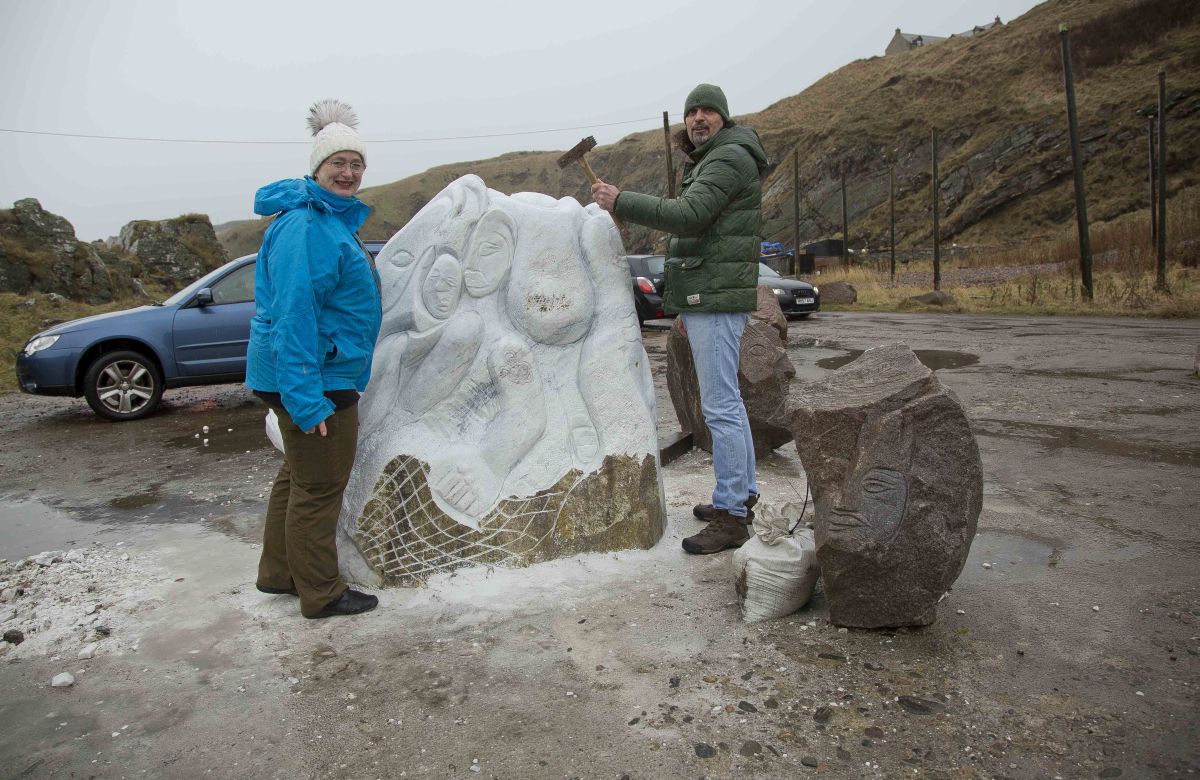 The creel, the net, the wild sea and the harvest of the sea are vividly portrayed along with, of course, the spirit of Isie herself.
The creel, the net, the wild sea and the harvest of the sea are vividly portrayed along with, of course, the spirit of Isie herself.
